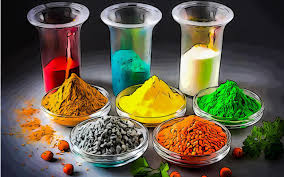
Breaking News
 Turning All U.S. Roads into Toll Roads: "Tax by Mile" is Here
Turning All U.S. Roads into Toll Roads: "Tax by Mile" is Here
 RFK's Deputy: Saviour or Wolf in Sheep's Clothing?
RFK's Deputy: Saviour or Wolf in Sheep's Clothing?
 One of America's biggest companies is imploding
One of America's biggest companies is imploding
 Zombie Voyager 1 Spacecraft Resurrects Its "Dead" Thrusters Over 15 Billion Miles Away
Zombie Voyager 1 Spacecraft Resurrects Its "Dead" Thrusters Over 15 Billion Miles Away
Top Tech News
 Watch: Jetson's One Aircraft Just Competed in the First eVTOL Race
Watch: Jetson's One Aircraft Just Competed in the First eVTOL Race
 Cab-less truck glider leaps autonomously between road and rail
Cab-less truck glider leaps autonomously between road and rail
 Can Tesla DOJO Chips Pass Nvidia GPUs?
Can Tesla DOJO Chips Pass Nvidia GPUs?
 Iron-fortified lumber could be a greener alternative to steel beams
Iron-fortified lumber could be a greener alternative to steel beams
 One man, 856 venom hits, and the path to a universal snakebite cure
One man, 856 venom hits, and the path to a universal snakebite cure
 Dr. McCullough reveals cancer-fighting drug Big Pharma hopes you never hear about…
Dr. McCullough reveals cancer-fighting drug Big Pharma hopes you never hear about…
 EXCLUSIVE: Raytheon Whistleblower Who Exposed The Neutrino Earthquake Weapon In Antarctica...
EXCLUSIVE: Raytheon Whistleblower Who Exposed The Neutrino Earthquake Weapon In Antarctica...
 Doctors Say Injecting Gold Into Eyeballs Could Restore Lost Vision
Doctors Say Injecting Gold Into Eyeballs Could Restore Lost Vision
The Rise And Fall Of Synthetic Food Dyes

His teacher, August Wilhelm von Hofmann, had published a hypothesis on how it might be possible to make a prized malaria drug using chemicals from coal tar, and as his assistant, Perkin was hoping that he would be the one to discover it.
The experiment was a failure. Rather than the prized drug, Perkin created a thick brown sludge. However, when he went to wash out the beakers with alcohol, it left behind a bright purple residue.
The residue became the world's first-ever mauve synthetic dye.
Before the invention of synthetic dyes, people obtained dyes through organic materials such as plants, clay, minerals, or certain animals such as insects and squid.
Natural dyes such as those from clay tended to fade quickly, and those that were long-lasting, such as natural indigo dyes, required an arduous extraction process that made them expensive.
However, Perkin's mauve dye was stable and easy to make.
Mauve dye became an instant hit in the UK and globally. Consumers were seized by "mauve measles." Everyone wanted a piece of it, including Queen Victoria, a fashion icon at the time who ordered mauve gowns, hats, and gloves.
Perkin's discovery and commercial success prompted chemists in Europe to find more dyes in coal tar; magenta was discovered in 1858, methyl violet in 1861, and Bismarck brown in 1863.
Synthetic dyes would soon be added to everything—clothing, plastics, wood, and food.
The rapid innovation was not without consequences. Many dyes were found to be harmful within decades of discovery. More than a century later, the United States recently announced the removal of synthetic dyes from food.
Dyes in Food
For centuries, people have colored food to make it appear more appealing. Butter, for example, is not always yellow. Depending on the cattle feed, breed, and period of lactation, the color of butter can fluctuate seasonally, from bright yellow in the summer to pale white in the winter.

 Node without Consent
Node without Consent Dark Matter: An 86-lb, 800-hp EV motor by Koenigsegg
Dark Matter: An 86-lb, 800-hp EV motor by Koenigsegg

